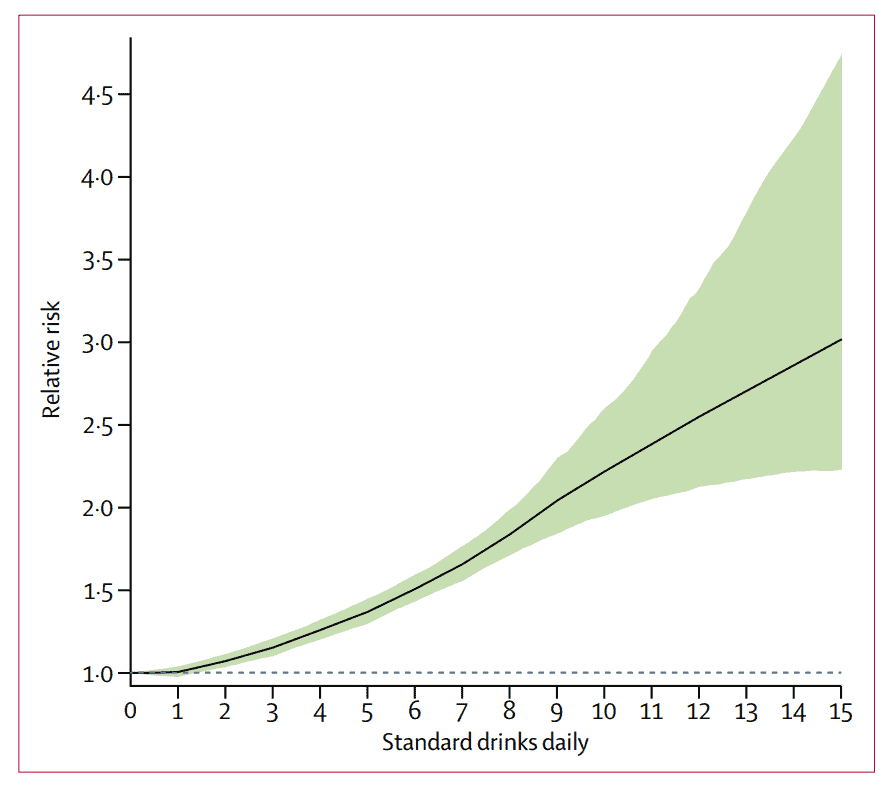
Although there are some isolated health benefits to moderately consuming alcohol, scientists say these are outweighed by the combined health risks of drinking. Bearing these findings in mind, one of the most comprehensive studies of its kind — which involved people in 195 countries, between 1990 and 2016 — concludes that there is no safe amount of alcohol.
The new study published in the reputed medical journal The Lancet used data from 694 studies in order to determine how common drinking was worldwide, and from 592 studies to work out the health risks. More than 28 million people worldwide have been included in this massive meta-analysis.
You may have heard about how a glass of wine each evening is good for the heart. While there is some truth to this claim, with studies linking moderate amounts of alcohol to lower risk for certain heart diseases, the benefits of alcohol are far outweighed by the risks — in particular, cancer and liver disease. Men are disproportionately affected by alcohol-related harm due to their higher intake of the psychoactive substance.
“Our findings indicate that alcohol use was associated with far more health loss for males than for females, with the attributable burden for men around three times higher than that for women in 2016,” the authors wrote.
According to the study, alcohol was responsible for 2.8 million deaths in 2016, making it the leading risk factor for premature mortality and disability in the 15 to 49 age group (20% of deaths). In people over 50, alcohol was an important risk factor for cancer — 27.1% of cancer deaths in women and 18.9% in men over 50 were linked to alcohol use, the study reported. In young people, the biggest causes of alcohol-related deaths were tuberculosis (1.4% of deaths), road injuries (1.2%), and self-harm (1.1%).
The study found that young people who have one drink of alcohol per day have a low risk of alcohol-related harm (0.5%). However, this risk jumps fast with heavier drinking: 7% for those who have two drinks a day and 37% for those with five.

Alcohol is perhaps the most popular psychoactive drug in the world, with one in three people, or 2.4 billion people around the world, drinking alcohol. However, alcohol use is distributed non-uniformly across geographical areas, ethnicity, and gender. A quarter of women and 39% of men drink. The most drinkers can be found in Denmark, where 95.3% of women and 97.1% of men consume alcohol, however, the heaviest drinkers are in Romania, for men (8.2 drinks a day), and Ukraine, for women (4.2 drinks a day). Conversely, the fewest drinkers were found in Pakistan, for men (0.8%), and Bangladesh, for women (0.3%).
The findings suggest that there are no safe levels of alcohol consumption and that alcohol control programs and policies should recommend abstinence.
“By evaluating all associated relative risks for alcohol use, we found that consuming zero standard drinks daily minimizes the overall risk to health,” the researchers wrote.
Failing to address the perils of alcohol, the authors of the new paper wrote, countries face dire effects at the population level. A prime example is Russia where 75% of deaths among men aged 15–55 years are caused by alcohol.
“The widely held view of the health benefits of alcohol needs revising, particularly as improved methods and analyses continue to show how much alcohol use contributes to global death and disability. Our results show that the safest level of drinking is none. This level is in conflict with most health guidelines, which espouse health benefits associated with consuming up to two drinks per day,” the authors concluded.






